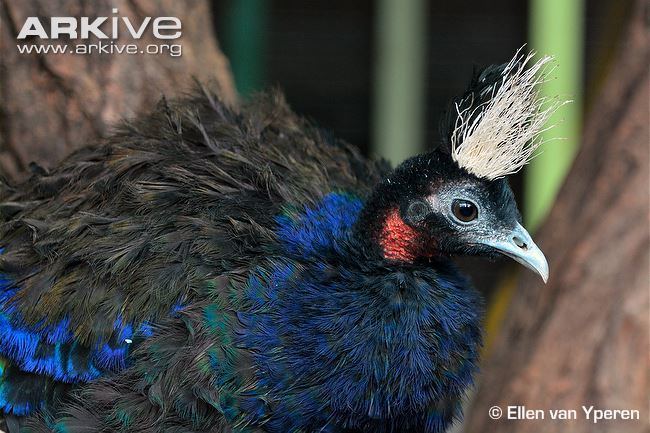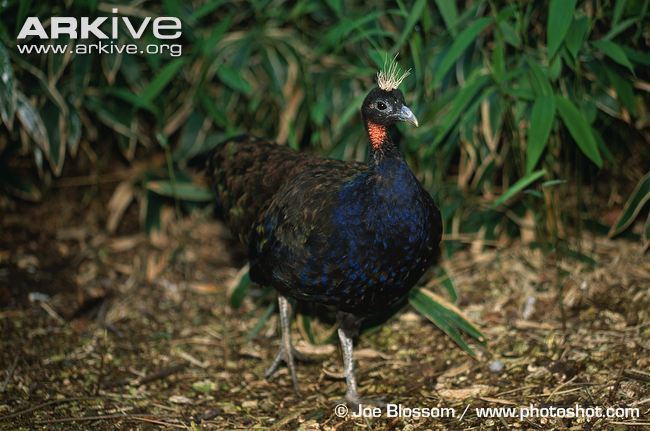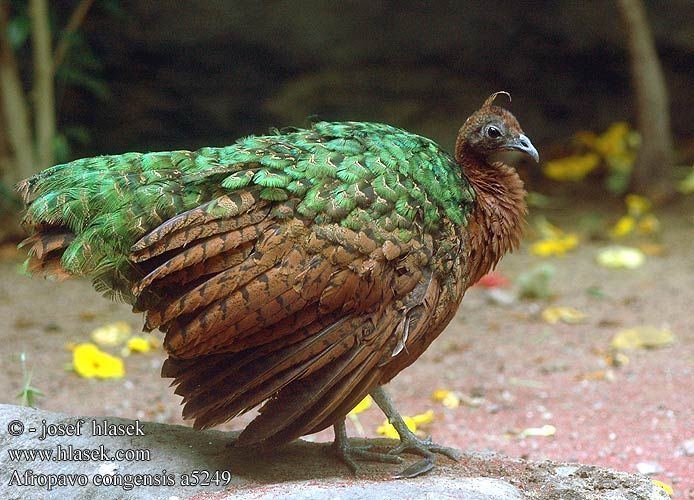Subfamily Phasianinae Scientific name Afropavo congensis Higher classification Afropavo | Genus AfropavoChapin, 1936 Phylum Chordata Rank Species | |
 | ||
Length Male: 64 – 70 cm (Adult), Female: 60 – 63 cm (Adult) Similar Bird, Phasianidae, Green peafowl, Galliformes, Great argus | ||
The Congo peafowl (Afropavo congensis), known as the mbulu by the Congolese, is a species of peafowl native to the Congo Basin. It is one of three extant species of peafowl, the other two being the Indian peafowl (originally of India and Sri Lanka) and the green peafowl (native to Burma and Indochina).
Contents
- Congo peafowl with great blue turaco bronx zoo
- History
- Description
- Diet and behavior
- Distribution
- Conservation
- References
Congo peafowl with great blue turaco bronx zoo
History

Very little is known about this species. It was only recorded as a species in 1936 by Dr. James Chapin after his failed search for the elusive okapi. Dr. Chapin noticed that the native Congolese headdresses contained long reddish-brown feathers that he couldn't identify with any previously known species of bird. Later, Chapin visited the Royal Museum of Central Africa and saw two stuffed specimens with similar feathers labeled as the 'Indian peacock' which he later discovered to be the Congo peacock, a completely different species. In 1955 Chapin managed to find seven specimens of the species . The Congo peacock has physical characteristics of both the peafowl and the guineafowl, which may indicate that the Congo peacock is a link between the two families.
Description

The male (peacock) of this species is a large bird of up to 64–70 cm (25–28 in) in length. Though much less impressive than its Asiatic cousins, the male's feathers are nevertheless deep blue with a metallic green and violet tinge. It has bare red neck skin, grey feet, and a black tail with fourteen tail feathers. Its crown is adorned with vertical white elongated hair-like feathers. The female measures up to 60–63 centimetres (24–25 in) in length and is generally a chestnut brown bird with a black abdomen, metallic green back, and a short chestnut brown crest. Both sexes resemble immature Asian peafowl, with early stuffed birds being erroneously classified as such before they were officially designated as members of a unique species.
Diet and behavior

Like members of the Pavo genus, the Congo peafowl are omnivores with a diet consisting mainly of fruits and insects. The male has a similar display to that of other species of peafowl, though the Congo peacock actually fans its tail feathers while other peacocks fan their upper tail covert feathers. The Congo peafowl is monogamous, though detailed mating information from the wild is still needed. The peacock of the species has a high-pitched "gowe" calling noise while the peahen emits a low "gowah". They have loud duets consisting of "rro-ho-ho-o-a" from both sexes.
Distribution

The Congo peafowl inhabits and is endemic to the Central Congolian lowland forests of the Democratic Republic of the Congo where it has also been as designated the national bird.
Conservation
Due to ongoing habitat loss, small population size, and hunting pressure in some areas, the Congo peafowl is evaluated as Vulnerable on the IUCN Red List of threatened species. As of 2013 their population in the wild was estimated to be between 2,500 and 9,000 individual adults. The Antwerp Zoo in Belgium and another at the Salonga National Park in the Democratic Republic of the Congo have started captive breeding programs.
